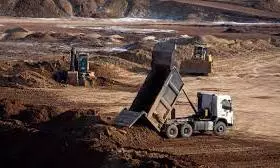
US-Ukraine minerals deal may take decades to yield financial returns
text_fieldsThe financial benefits of a new minerals agreement between Ukraine and the US may not be realised for a decade or longer, according to mining experts.
While mineral resource development in established mining regions like Canada and Australia typically takes 10 to 20 years, the situation in Ukraine presents unique challenges that could delay production even further.
Many of Ukraine's mineral deposits lack sufficient data to determine their economic viability, and the ongoing war with Russia has severely damaged the country’s infrastructure, including power and transport systems. These issues, combined with the uncertainty of future security, make it difficult for investors to commit substantial resources to Ukraine’s mining sector.
Adam Webb, head of minerals at Benchmark Minerals Intelligence, remarked, "Anyone thinking that minerals are going to start flooding out of Ukraine is living in a dream world." He added that it would be hard to justify investing in Ukraine when other countries offer critical mineral resources without the risk of war.
Despite the long timeline for financial returns, Ukrainian officials are viewing the agreement as a political victory. They believe it will strengthen US support, which has fluctuated under former President Donald Trump, especially in terms of military and financial aid to combat Russia’s invasion.
The deal, which focuses on Ukraine’s deposits of rare earth elements - used in products like smartphones and electric cars - is of particular interest to the US, which has faced trade tensions with China, the world’s leading supplier of these materials.
The agreement outlines revenue generation through royalties, license fees, and production-sharing agreements, though financial specifics have yet to be finalised. A limited partnership between the US International Development Finance Corporation and Ukraine’s State Organization Agency on Public-Private Partnerships is still in the works.
Ukraine’s mining sector holds significant potential, with the country possessing deposits of 22 of the 34 minerals the European Union considers critical, including lithium, nickel, and rare earth elements. However, the path to turning these discovered resources into economically viable reserves will require substantial investment and time. Consultancy firm CRU's Willis Thomas noted that the constraints on investment, both before and after the war, have further delayed this process.
In 2024, Ukraine's government earned approximately $1 billion from royalties and fees related to natural resource exploitation, but the new deal will only generate revenue from future licenses, permits, and agreements made after the deal takes effect.
The pace of issuing mining licenses in Ukraine has been slow, even before the war, with only a handful of new licenses issued between 2012 and 2020. Ukraine currently holds a total of 3,482 active licenses for natural resource extraction. This slow licensing process may continue to hinder progress in the sector, reported Reuters.
Security remains another significant hurdle, as some promising mineral projects are located in Russian-occupied territories. The agreement does not provide any security guarantees, which may deter potential investors. Seven of 24 identified mining projects are in areas under Russian control, including lithium, graphite, and rare earth elements.
Webb also noted that the deal could deepen US involvement in Ukraine, as the country now has a more significant stake in the war’s resolution in order to access these valuable resources.
























